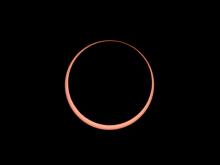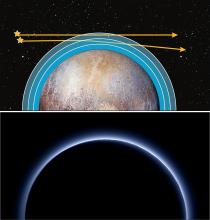Listen to today's episode of StarDate on the web the same day it airs in high-quality streaming audio without any extra ads or announcements. Choose a $8 one-month pass, or listen every day for a year for just $30.
You are here
Variable Stars
In Shakespeare’s play “Julius Caesar,” Caesar declares himself to be “as constant as the north star.” Unfortunately for Caesar, though, the current North Star, Polaris, turns out to be not very steady at all — its brightness can vary by quite a bit.
No star is completely steady. Even the Sun’s overall brightness changes — by about a tenth of a percent over a period of more than a decade. But some stars vary by a lot.
Variable stars fit into a couple of main categories.
Stars like Polaris actually pulse in and out like a beating heart. In the case of Polaris, each “beat” lasts several days. As the star’s diameter changes, so does its brightness. For some stars in the same class as Polaris, the change in brightness is even more dramatic.
The other category is eclipsing stars. The two stars in such a system orbit in such a way that they regularly pass in front of each other as seen from Earth. When one star covers the other, the system’s brightness can drop by quite a bit.
Perhaps the most famous example is Algol — the “demon” star. About every three days, the system’s fainter star passes in front of the brighter one. That drops the overall brightness by more than two-thirds — a change that gave the star a “spooky” reputation.
Algol is high in the west at nightfall, in the constellation Perseus. Polaris is right where it always is — marking due north every night of the year.
We’ll talk about some stars that get especially close tomorrow.
Script by Damond Benningfield






